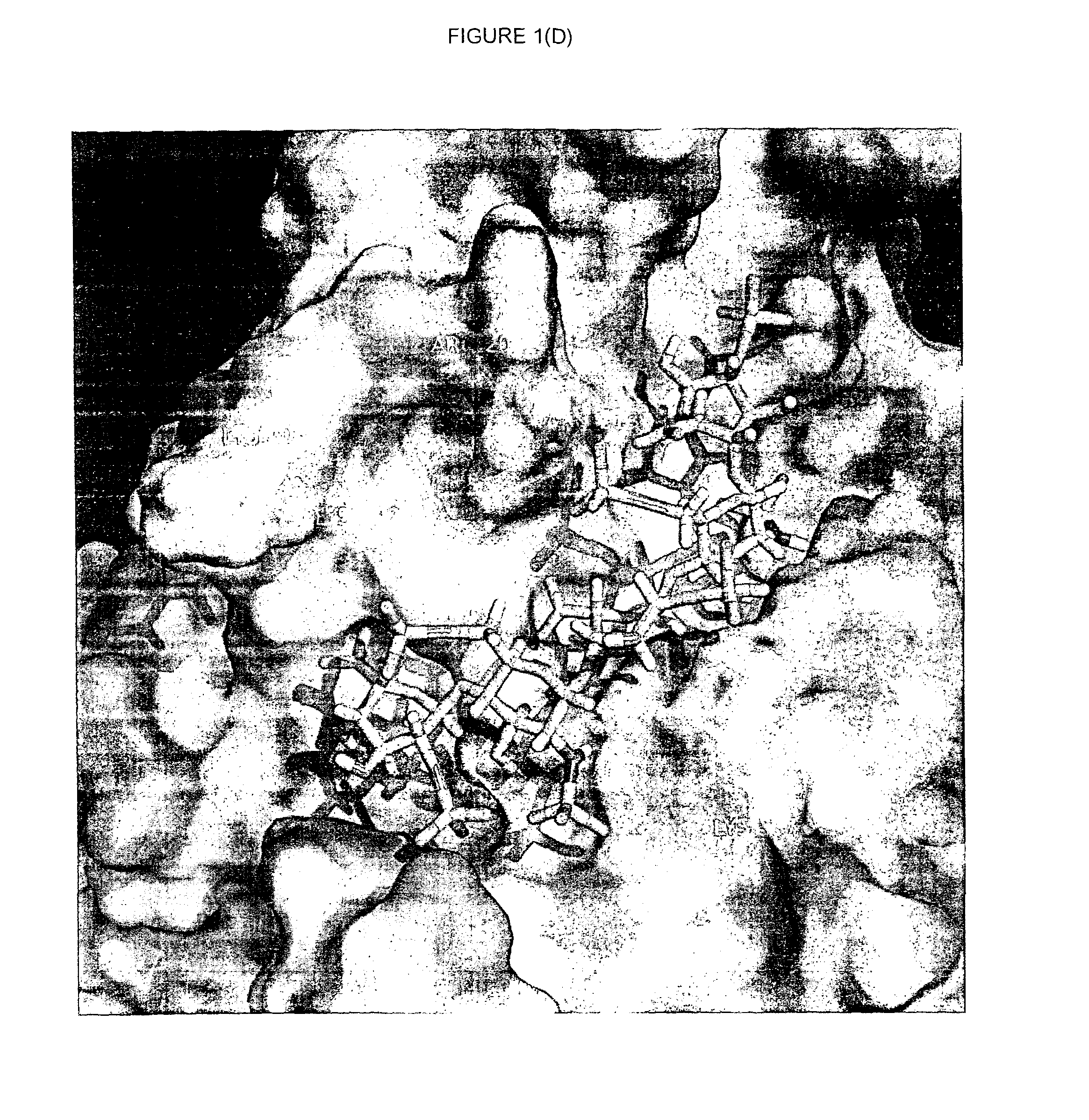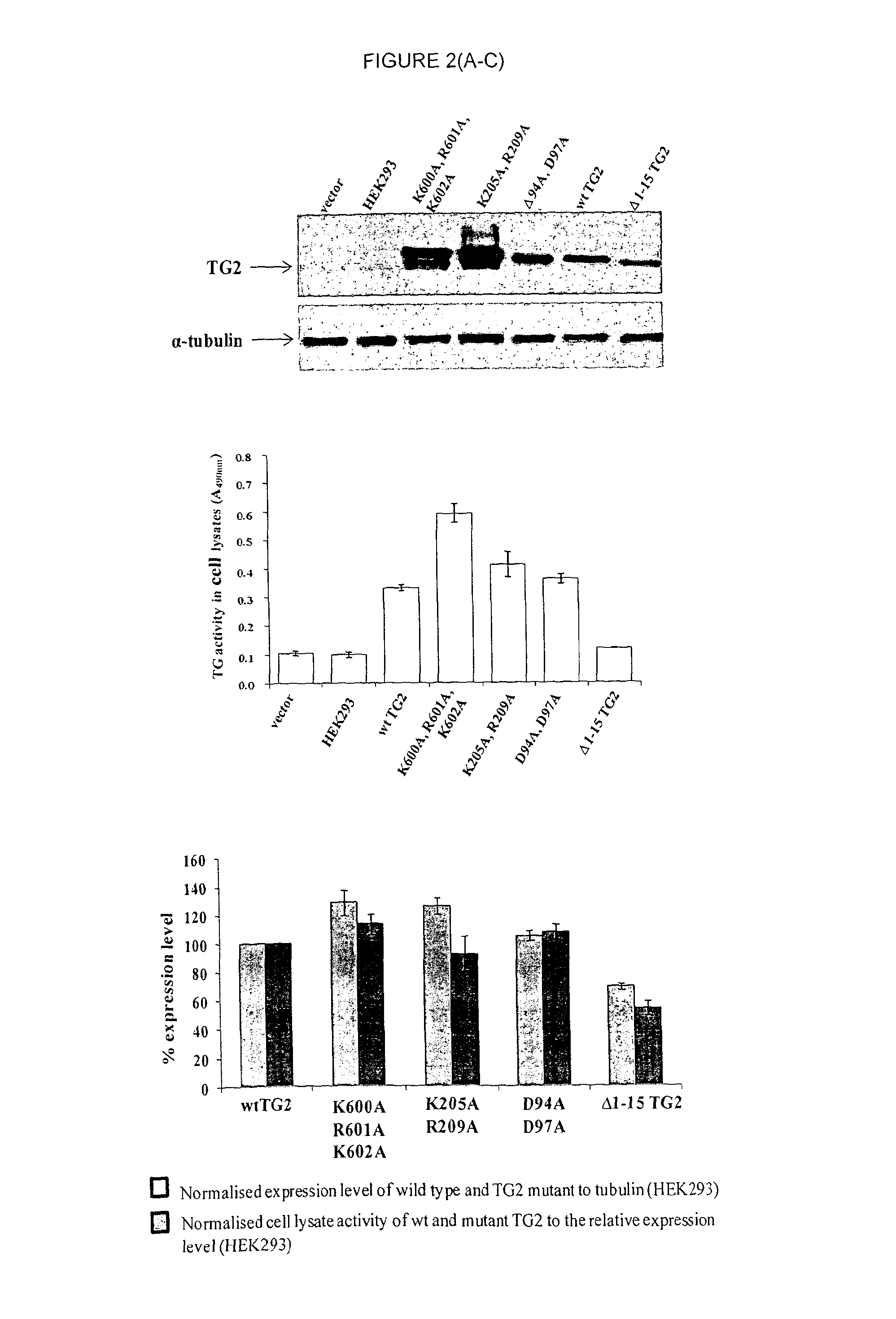Novel polypeptides and use thereof
- Summary
- Abstract
- Description
- Claims
- Application Information
AI Technical Summary
Benefits of technology
Problems solved by technology
Method used
Image
Examples
example b
Methods
[0330]Cell adhesion and spreading assays were performed as described above in Example 1 method ‘Cell adhesion assay’
Results
[0331]Smaller peptides, derived from P1 (NPKFLKNAGRDCSRRSS; SEQ ID NO: 2) were assessed for their ability to inhibit the attachment and spreading of HOB cells on FN and TG-FN in the presence and absence of RGD. The fragment peptides (NPKFLKNA [SEQ ID NO:4] and GRDCSRRSS [SEQ ID NO: 3]) were synthesised to determine the minimum functional peptide sequence required to produce the same effect as P1.
[0332]FIG. 14 shows that using the peptide NPKFLKNA (SEQ ID NO:4) at a concentration between 100 and 400 μg / ml it can be seen that the peptide was inhibitory to cell attachment and spreading at concentrations above 200 μg / ml, and it could not abrogate the compensatory effects of TG2-FN, when the cells were plated onto the TG-FN matrix in the presence of the RGD peptide.
[0333]Peptide GRDCSRRSS (SEQ ID NO: 3), however was able to inhibit the compensatory effects of ...
example c
Methods
[0335]In these experiments, an extended form of the exemplary “P1” peptide described above was used, in order to achieve better extension from the immobilised support. The “Extended P1” peptide comprises the full binding pocket of the heparin binding site
[0336]96-Well ELISA plates were coated with 1 μg / ml of bovine serum albumin (BSA) conjugated peptide (“Extended P1”: NPKFLKNAGRDCSRRSSPVYVGRc; SEQ ID NO:29) conjugated through its C-terminal cysteine via Beta-maleimidopropionic acid N-hydroxysuccinimide ester (MPS). Peptides were dissolved in NaHCO3 / Na2CO3 coating buffer, pH 9.6 and plates coated at 4° C. for overnight. Wells coated with 1 μg / ml BSA NaHCO3 / Na2CO3 coating buffer or 5 μg / ml FN in 50 mM Tris-HCl, pH 7.4 were used as the control coating materials. Human osteoblasts (HOB) cells in suspension was treated with 100 μg / ml RAD (GRADS; SEQ ID NO:9) or RGD (GRGDTP; SEQ ID NO:8) peptide for 20 min, the cells (3×104 / well) were seeded into the wells, previously washed with ...
PUM
| Property | Measurement | Unit |
|---|---|---|
| Composition | aaaaa | aaaaa |
| Adhesion strength | aaaaa | aaaaa |
Abstract
Description
Claims
Application Information
 Login to View More
Login to View More - R&D
- Intellectual Property
- Life Sciences
- Materials
- Tech Scout
- Unparalleled Data Quality
- Higher Quality Content
- 60% Fewer Hallucinations
Browse by: Latest US Patents, China's latest patents, Technical Efficacy Thesaurus, Application Domain, Technology Topic, Popular Technical Reports.
© 2025 PatSnap. All rights reserved.Legal|Privacy policy|Modern Slavery Act Transparency Statement|Sitemap|About US| Contact US: help@patsnap.com



